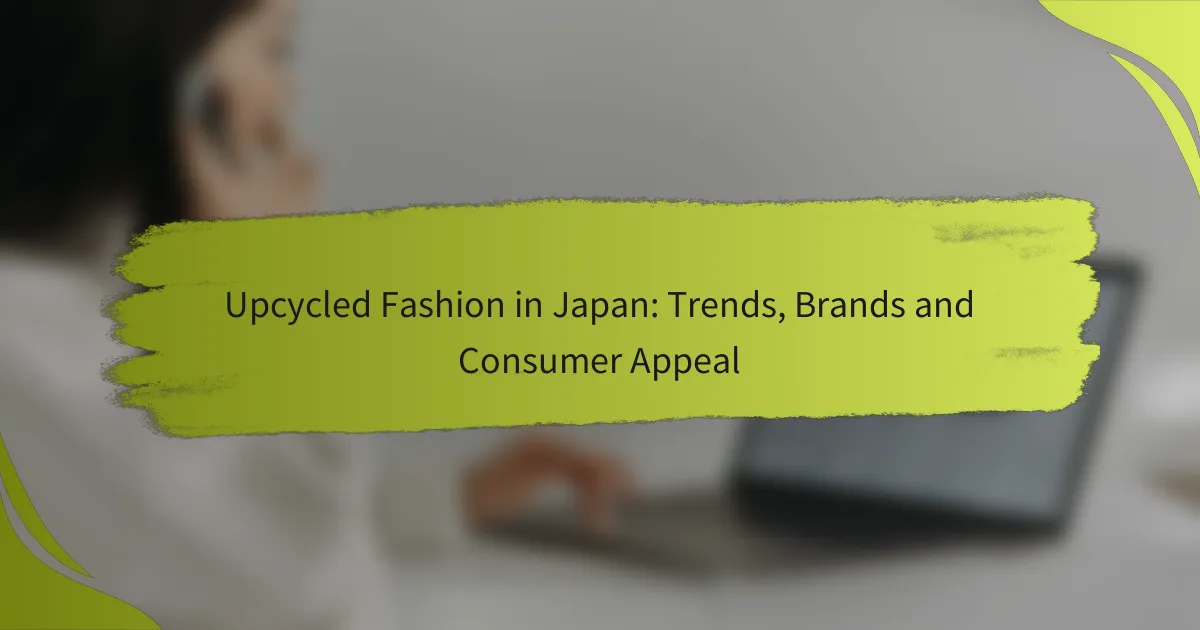日本におけるアップサイクルファッションのトレンドは、創造性、持続可能性、文化的遺産を強調しています。デザイナーたちは、環境意識の高い消費者にアピールするために、ヴィンテージ要素や伝統的なテキスタイルを取り入れています。
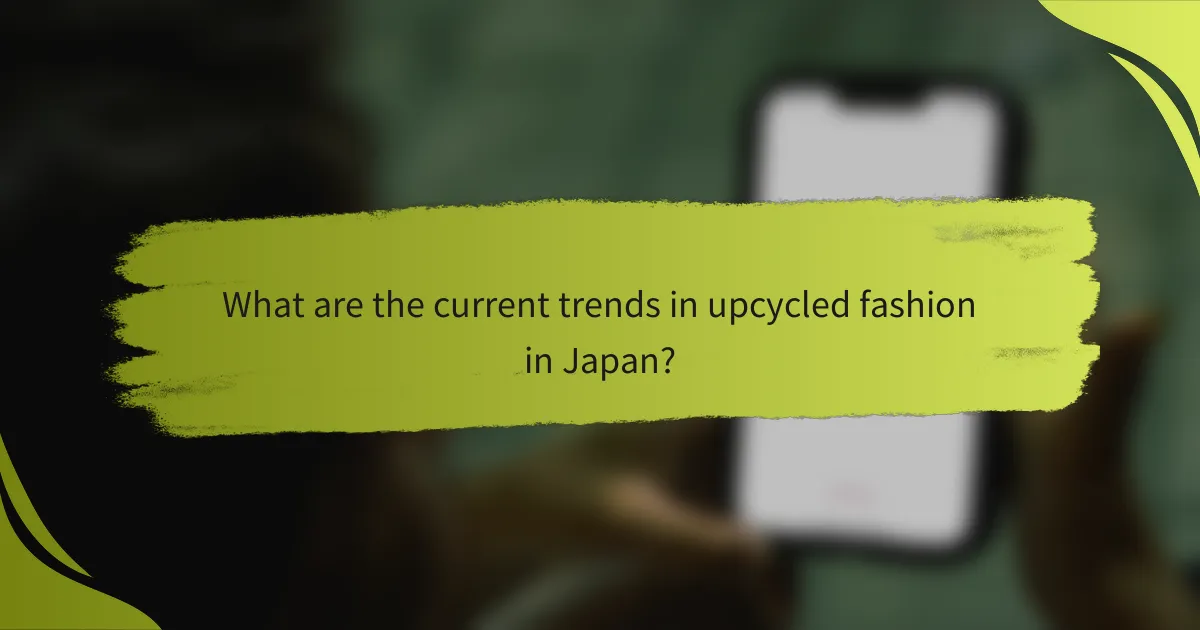
What are the current trends in upcycled fashion in Japan?
Current trends in upcycled fashion in Japan emphasize creativity, sustainability, and cultural heritage. Designers are increasingly incorporating vintage elements and traditional textiles, appealing to environmentally conscious consumers who value unique, handcrafted items.
Popularity of vintage aesthetics
Vintage aesthetics are gaining traction in Japan’s upcycled fashion scene, with many brands sourcing materials from past decades. This trend not only celebrates nostalgia but also promotes sustainability by reusing existing garments. Consumers are drawn to the individuality and character that vintage pieces offer, making them a popular choice.
Integration of traditional Japanese textiles
Upcycled fashion in Japan often features traditional textiles such as kimono fabrics, which are repurposed into modern designs. This integration highlights Japan’s rich textile heritage while appealing to a contemporary audience. Brands that utilize these materials create unique pieces that tell a story, connecting the past with the present.
Rise of sustainable materials
There is a growing emphasis on sustainable materials in Japan’s upcycled fashion industry. Designers are increasingly using organic fabrics, recycled plastics, and other eco-friendly materials to create their collections. This shift not only reduces waste but also aligns with the values of consumers who prioritize environmental responsibility.
Collaboration with local artisans
Many upcycled fashion brands in Japan are collaborating with local artisans to enhance the craftsmanship of their products. These partnerships often result in unique, high-quality items that reflect local culture and skills. By supporting artisans, brands contribute to the preservation of traditional techniques while offering consumers distinctive fashion choices.
Influence of streetwear culture
Streetwear culture significantly influences upcycled fashion trends in Japan, with many designers incorporating bold graphics and casual styles. This influence attracts a younger demographic that values self-expression and individuality. Upcycled streetwear often features playful designs and unexpected combinations, making it a vibrant part of the fashion landscape.
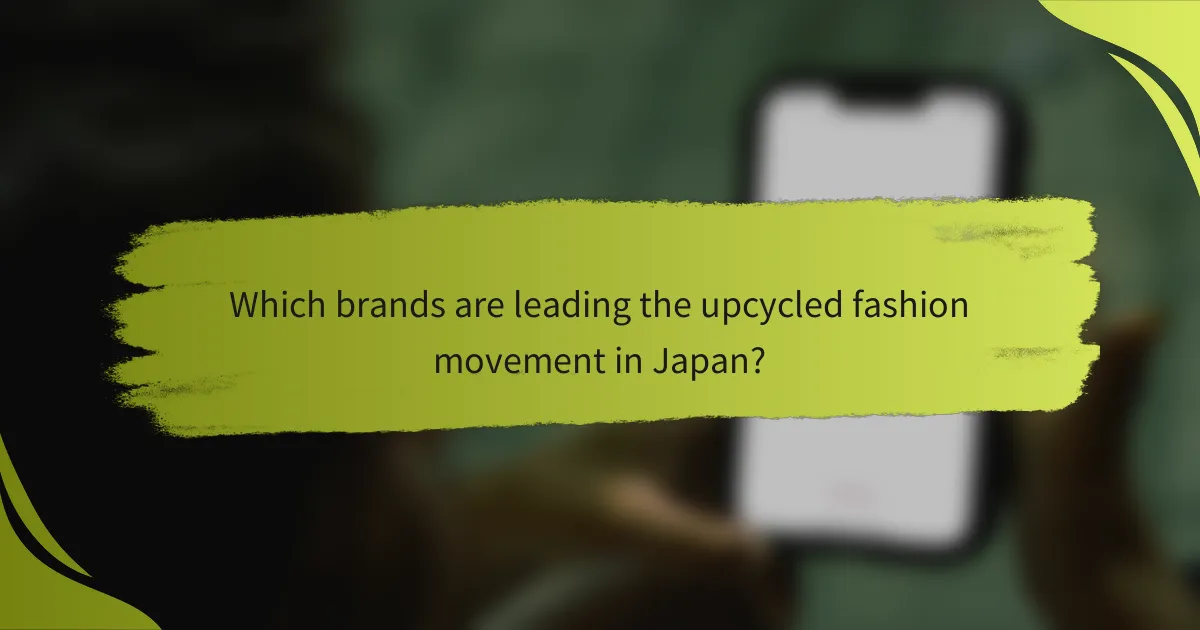
Which brands are leading the upcycled fashion movement in Japan?
Several brands are at the forefront of the upcycled fashion movement in Japan, focusing on sustainability and innovative design. These brands creatively repurpose materials to reduce waste while appealing to environmentally conscious consumers.
Ragtag
Ragtag is a prominent player in Japan’s upcycled fashion scene, specializing in the resale and upcycling of high-end designer clothing. They curate a selection of second-hand items, often transforming them into unique pieces that reflect current trends.
The brand emphasizes quality and sustainability, making it a favorite among eco-conscious shoppers. Ragtag’s approach not only promotes the circular economy but also encourages consumers to rethink their fashion choices.
JUNYA WATANABE COMME des GARÇONS
JUNYA WATANABE, a protégé of Rei Kawakubo, is known for incorporating upcycled materials into his avant-garde designs. His collections often feature unexpected fabric combinations, showcasing creativity while addressing environmental concerns.
The brand’s commitment to sustainability is evident in its innovative use of textiles, making each piece not only a fashion statement but also a conversation starter about the importance of eco-friendly practices in the industry.
H&M Conscious Collection
H&M’s Conscious Collection is a key initiative aimed at promoting sustainable fashion through upcycled materials. This line features clothing made from recycled fabrics and organic cotton, appealing to a broad audience looking for affordable yet eco-friendly options.
By integrating upcycled elements into their designs, H&M raises awareness about sustainability while providing consumers with stylish choices that minimize environmental impact.
Muji’s sustainable initiatives
Muji is recognized for its commitment to sustainability, incorporating upcycled materials into its product lines. The brand focuses on simplicity and functionality, often using recycled fabrics in clothing and accessories.
Muji’s initiatives not only reduce waste but also promote a minimalist lifestyle, resonating with consumers who value both practicality and environmental responsibility.
FASHION FOR GOOD Japan
FASHION FOR GOOD Japan is an initiative that supports sustainable fashion practices, including upcycling. It connects brands, innovators, and consumers to foster collaboration and promote eco-friendly solutions within the fashion industry.
This platform encourages the adoption of upcycled materials and sustainable practices, helping to shape a more responsible fashion landscape in Japan. Through workshops and events, FASHION FOR GOOD Japan raises awareness and inspires action among consumers and brands alike.
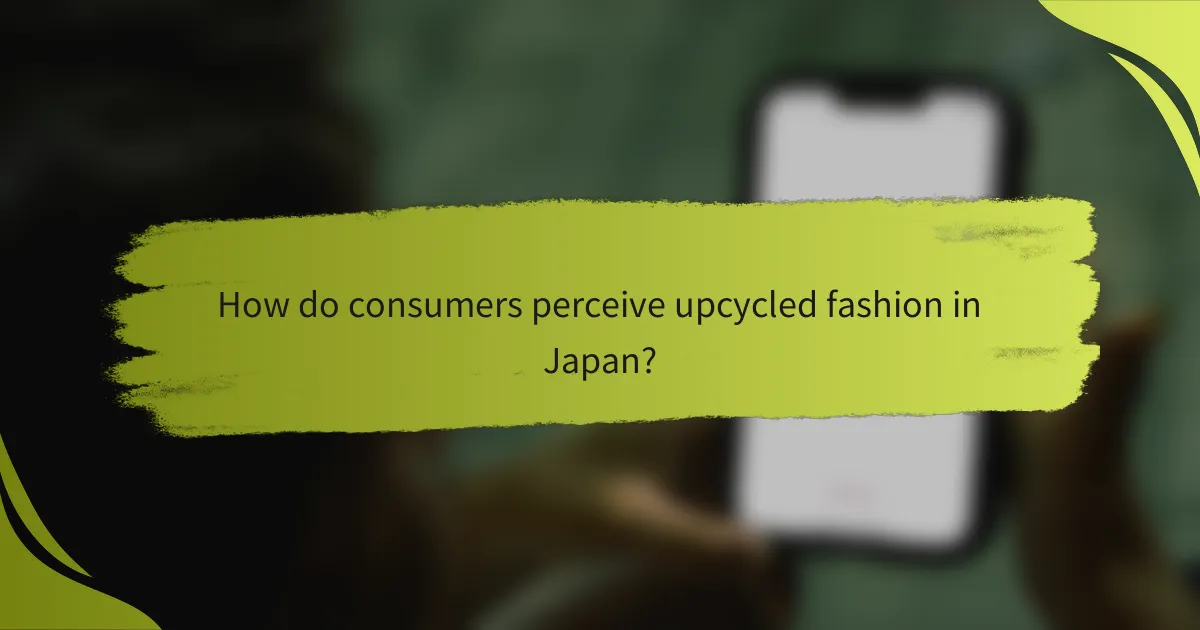
How do consumers perceive upcycled fashion in Japan?
Consumers in Japan increasingly view upcycled fashion as a sustainable and innovative choice. This perception is shaped by a growing awareness of environmental issues and a desire for unique clothing that tells a story.
Growing awareness of sustainability
In Japan, awareness of sustainability has risen significantly, particularly among younger consumers. Many are now considering the environmental impact of their purchases, leading to a preference for upcycled fashion, which reduces waste and promotes resourcefulness.
Brands that emphasize their sustainable practices often attract more attention. This trend is evident in various fashion events and campaigns that highlight eco-friendly initiatives.
Desire for unique fashion items
Japanese consumers are drawn to upcycled fashion for its uniqueness and individuality. Each piece often has a distinct history, making it more appealing than mass-produced items.
This desire for originality aligns with Japan’s rich culture of craftsmanship, where consumers appreciate the artistry involved in creating one-of-a-kind garments.
Willingness to pay a premium
Many consumers in Japan are willing to pay a premium for upcycled fashion items. This willingness stems from the perceived value of sustainability and uniqueness that these pieces offer.
While prices can vary, consumers often expect to pay slightly more than for conventional clothing, reflecting the craftsmanship and environmental benefits associated with upcycled products.
Influence of social media on buying decisions
Social media plays a crucial role in shaping consumer perceptions of upcycled fashion in Japan. Platforms like Instagram and TikTok allow brands to showcase their unique pieces and sustainability stories, reaching a wider audience.
Influencers and fashion bloggers often promote upcycled items, encouraging their followers to consider these options, which can significantly impact purchasing decisions.
Concerns about quality and durability
Despite the positive perception, some consumers express concerns about the quality and durability of upcycled fashion. They worry that these items may not last as long as traditional garments.
To address these concerns, brands must emphasize quality control and provide clear information about the materials used. Offering guarantees or return policies can also help reassure potential buyers.
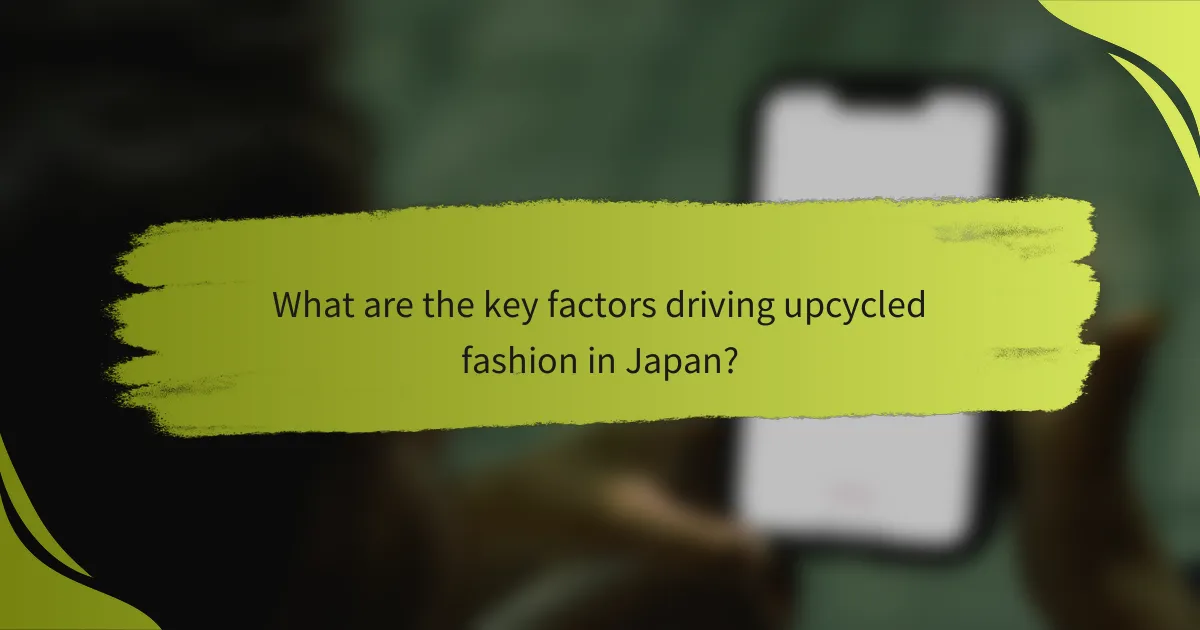
What are the key factors driving upcycled fashion in Japan?
Key factors driving upcycled fashion in Japan include a growing awareness of environmental issues and increased consumer demand for sustainable products. As more individuals recognize the negative impact of fast fashion, they are turning to upcycled options that combine creativity with eco-friendliness.
Environmental consciousness
Environmental consciousness plays a crucial role in the rise of upcycled fashion in Japan. Many consumers are increasingly aware of the environmental costs associated with clothing production, leading them to seek alternatives that reduce waste and promote sustainability. Upcycled fashion not only minimizes landfill contributions but also encourages the reuse of materials.
Brands are responding to this demand by creating unique pieces from discarded textiles, which appeals to eco-conscious shoppers. For instance, some Japanese designers transform old kimonos into modern garments, preserving cultural heritage while addressing environmental concerns.
Government support for sustainable practices
The Japanese government has been actively promoting sustainable practices, which has positively influenced the upcycled fashion sector. Initiatives aimed at reducing waste and encouraging recycling have gained traction, providing a supportive framework for brands focused on sustainability. This includes funding programs and public awareness campaigns that highlight the importance of eco-friendly practices.
Moreover, regulations encouraging businesses to adopt sustainable practices have led to a more favorable environment for upcycled fashion. For example, the government has set targets for waste reduction, motivating companies to innovate and explore upcycling as a viable business model.
